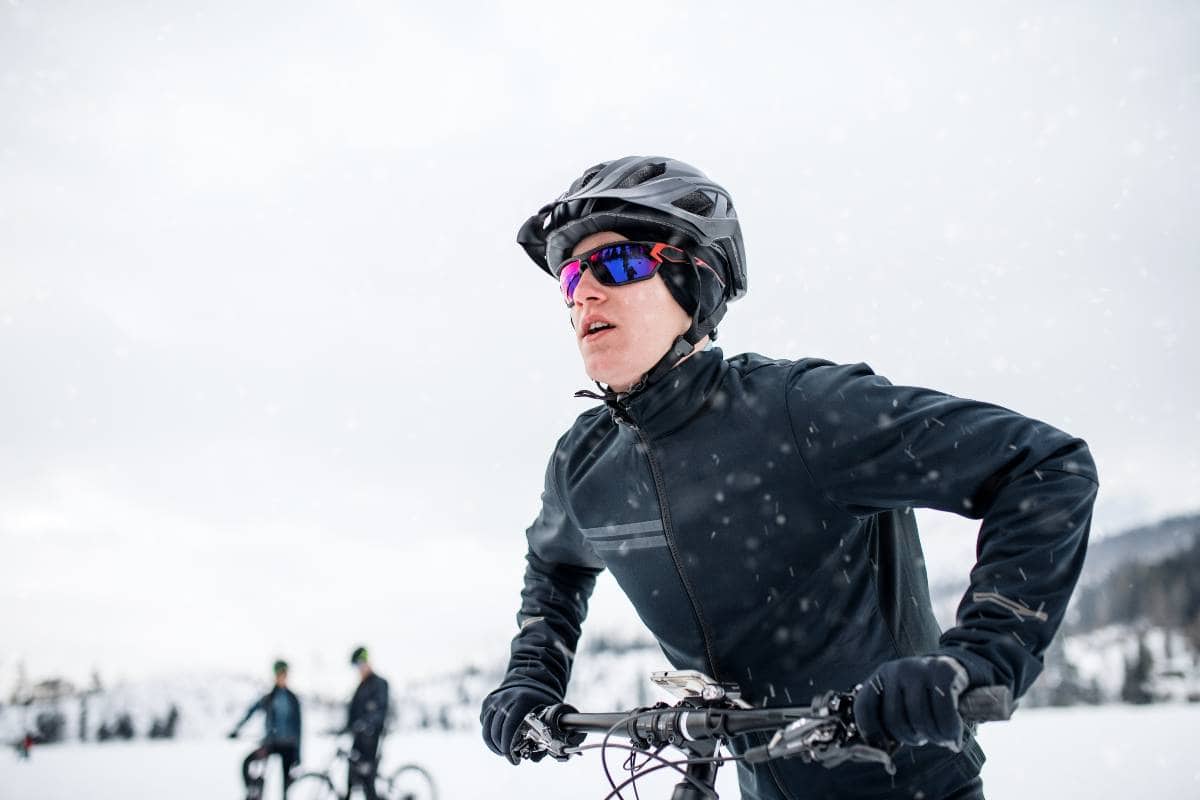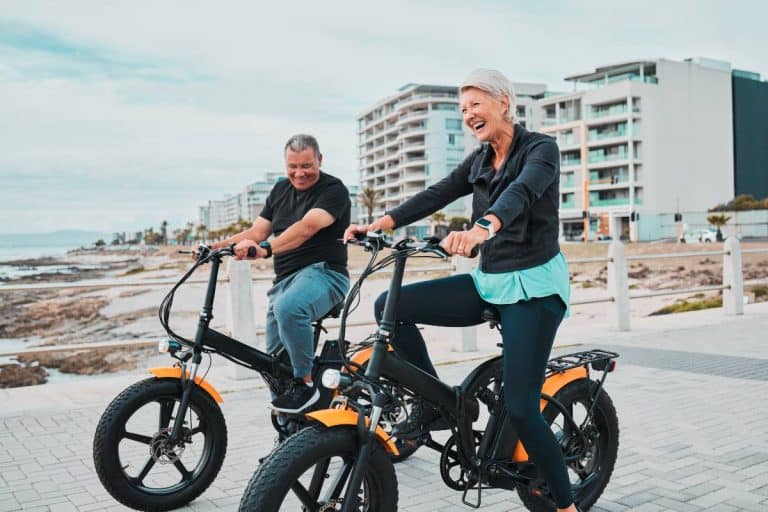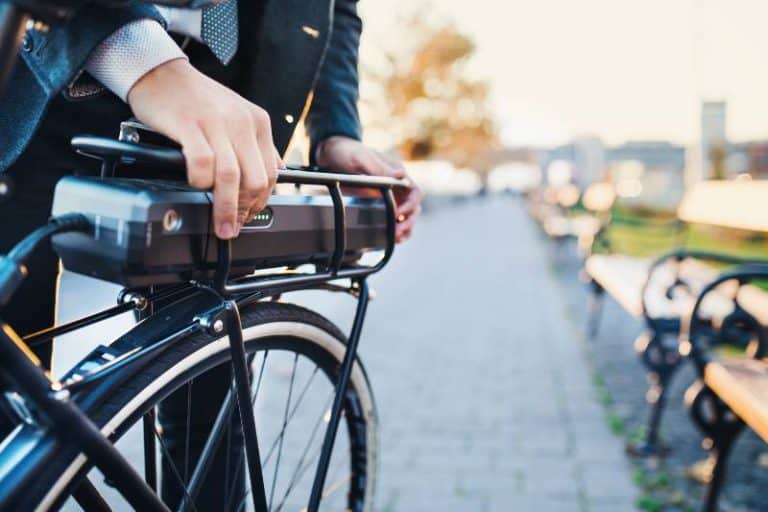Riding Your Electric Bike in Winter: Must-Know Tips
Just because there’s a chill in the air doesn’t mean you need to pack up your e-bike for winter hibernation. With proper preparation and precaution, electric bikes can be enjoyed year-round. In this cold-weather riding guide, we’ll explore winter-specific essentials. You’ll learn everything necessary to continue pedaling through winter wonderlands safely while maximizing two-wheeled excitement. So don’t let icy precipitation stand in the way of your next e-bike adventure!
Key Takeaways
- Store e-bike batteries at around 50% charge indoors over winter and charge after warming to room temperature to maintain health.
- Use studded tires and lower tire pressure for snow/ice traction alongside added lights and reflectors to improve winter visibility.
- Ride your Electric Bike in Winter gradually, avoid ice, go slower, winterize components, and conduct frequent maintenance to prevent damage from cold and moisture.
Riding an Electric Bike in Winter? How to Stay Safe and Have Fun!
As the founder of Electrik Living, I’m committed to promoting eco-friendly transport all year round, including riding e-bikes during the winter. I know the prospect of biking through snow and ice may seem daunting, but with the right preparations, you can comfortably and safely enjoy winter riding!
When my daughter Trinity was born on Earth Day, it inspired me to find ways to reduce our family’s carbon footprint. Riding an e-bike is not only emission-free, but it also brings joy and health benefits. I didn’t want chilly weather to discourage us from continuing our sustainable lifestyle.
So I did my research, upgraded my ride, and embraced the challenge of winter cycling. Now our whole family bikes year-round! If you’re considering trying winter e-biking yourself, read on for my top tips to stay warm, safe, and have fun no matter the conditions.
Prep Your E-Bike for Maximum Cold Weather Performance
Riding in freezing temperatures impacts e-bike components and reduces battery range. However, some simple preparation and maintenance tweaks allow your electric ride to cruise all winter.
Optimize Battery Care and Usage
Caring for batteries properly ensures your e-bike system works reliably in cold conditions.
- The single most important practice is storing batteries indoors, in a dry area, maintained at around 50% charge when not in use.
Never charge a cold battery! Allow it to gradually warm to room temperature before recharging after freezing rides to prevent damage. Expect reduced mileage per charge in winter, so consider carrying a backup battery if commuting far. Protect your battery from precipitation and wind exposure using an insulated, water-resistant case or bag.
Prioritize Tires and Traction
Finding the optimal tire pressure sweet spot through experimentation improves winter traction. Lower PSI levels allow tires to better conform to uneven icy terrain. Studded tires grip well for riding paths and roads, while fat knobby tires work best in loose or fresh snow.
Riding in freezing temperatures impacts e-bike components and reduces battery range. However, some simple preparation and maintenance tweaks allow your electric ride to cruise all winter.
Safeguard Batteries for Reliability
Caring properly for e-bike batteries ensures your electric systems operate reliably despite cold weather strain.
- The most vital practice is storing batteries indoors when not riding, keeping them in a dry location, and maintaining them at a 50% charge level.
Avoid recharging chilled batteries immediately after freezing rides, allowing them to first gradually warm to room temperature. Doing so prevents permanent performance degradation from thermal shock. Understand that winter rides will deplete charges faster than normal due to having to work harder to overcome conditions.
So consider carrying a backup battery if you commute long distances and want to prevent being stranded. Finally, insulate your battery using a water-resistant, protective case or bag when riding to block temperature extremes, and precipitation exposure, and avoid road debris strikes.
Get Maximum Winter Traction
Finding your tire pressure sweet spot through experimentation dramatically enhances winter traction for safer handling. In general, lower PSI levels allow tires to better conform to uneven icy terrain instead of sliding across the surface. Studded mountain bike tires grip well on most snowy paths and roads. Meanwhile, fat knobby tires with aggressive tread patterns work best for loose fresh snow or deeper accumulation.
Dress for Subzero Winter Cycling Safety and Comfort

Properly bundling up makes the difference between misery and comfort during winter bike rides. Follow the “3 W’s” when gearing up for cold weather cycling – keeping warm, waterproofing, and protecting areas prone to frostbite.
Keep Warm by Blocking the Wind
Wear insulating wool or synthetic base and mid-layers to trap body heat during your ride. Top with a windproof, water-resistant outer shell to block chilling winds from penetrating layers. Carry extra insulation you can layer on for when you stop riding or if temperatures drastically drop. Having backup warmth prevents getting dangerously cold.
Waterproof Boots, Gloves, and Gear
Look for winter-specific gloves with liners rated for freezing use when purchasing hand protection. Mittens provide more warmth than fingered gloves. Insulated, waterproof boots with grippy tread significantly reduce slip risks while protecting feet from soaking snow or icy puddles. Further shield footwear by wearing waterproof gaiters or overshoes when cycling through winter precipitation.
Guard Exposed Areas Prone to Frostbite
Exposure to frigid winds can quickly cause facial frostbite and numbness. Defend yourself wearing a balaclava, neck gaiter, or ski mask. Helmet liners and goggles provide additional protection by preventing body heat from escaping through your head. Finally, seal wrists from icy air by wearing inner sleeve base layers and outer glove covers.
Snow and Ice Call for Extra Riding Caution
Snow and slush significantly reduce traction and visibility for cycling. Adjusting riding habits helps compensate for decreased control and reaction time in winter conditions.
Accelerate gradually from stops and brake early before turns to avoid skidding on icy roads. Remain vigilant scanning ahead and divert your route to avoid sections not plowed or with deep snow buildup. When approaching particularly slippery intersections or bike lane segments, walk your bike across to maintain stability.
Signal turns further in advance than normal so other vehicles, cyclists, and pedestrians can anticipate your intended movements on slick roads. Additionally, reduces speed overall and substantially increases the distance between you and surrounding cars or bikes. Extra cushion buffers against decreased ability to maneuver and stop rapidly amid precipitation.
Exercising additional caution by proactively avoiding slippery areas, traveling slower, and gaining extra stopping distance helps secure safe passage. Remain patient and focused when navigating the uncertainties of winter cycling.
Post-Ride Winter Bike Maintenance

Wash Grime to Prevent Rust and Corrosion
Rinsing your bike with water soon after winter rides helps dissolve corrosive salt, sand, and road grime before it damages frame surfaces. Follow up by wiping down the entire frame with soap and water to further prevent rust and corrosion from forming from lingering precipitate.
Relubricate Components
The wetness of winter also washes away essential oils inside brake cables, the drivetrain, and other moving parts. Be diligent about reapplying lubricant to prevent moisture exposure from freezing components or grinding down surfaces through added friction. Move parts through their range of motion to distribute fresh lubricant thoroughly.
Inspect for Damage
Carefully inspect brake pads, tires, spokes, and other elements prone to excessive winter wear each time you clean your bike. Spotting issues like cracking rubber, frayed cables, or loose spokes early allows you to proactively perform repairs and prevent unsafe breakdowns on the road. Conduct a full tune-up periodically to identify and address deterioration.
Store Your E-Bike Safely During Extended Breaks
Unless riding consistently year-round, properly storing your e-bike during lengthy breaks prevents costly damage from developing.
As mentioned previously, the most essential action is taking batteries inside rather than leaving them outdoors exposed to temperature extremes. Maintain around a 50% charge level to prevent fully draining or overcharging when not in periodic use.
Keep entire e-bikes in dry, room-temperature spaces over extended periods of non-use. Exposure to humidity risks corrosion and rust across metallic frames and component surfaces from condensation. Additionally, significant shifts between hot and cold temperatures tend to warp sensitive elements like batteries and composite materials.
- Hang bikes or rest them on tires/pedals to prevent flat spots from long-term static tire contact.
Before your next ride after an extended break, thoroughly inspect all systems and functions to spot any deterioration that developed during downtime. Look over the frame, wheels, drivetrain, electronics, and brakes closely with a test ride to confirm everything operates reliably before hitting the roads at speed or over distance. Addressing issues promptly better ensures safe, smooth performance and re-starting riding after a hiatus.
Frequently Asked Winter E-Bike Questions
Is it safe to ride e-bikes on snow and ice?
With studded tires and by riding slowly and carefully, e-bikes can manage snow and ice fairly well. But it’s smart to avoid riding in heavy snowfall or on uncleared, icy roads.
How can I keep my hands and feet warm while riding?
The best gloves and boots for winter riding have insulation and windproofing. Heated handgrips and insoles help too. Bar mitts allow you to wear lighter gloves.
Should I get a second battery for winter riding?
If you commute long distances, a second battery can be useful, since range is reduced in cold weather. For shorter rides, one battery stored properly should suffice.
What’s the best way to wash an e-bike in winter?
Use a damp cloth to wipe down your bike and protect sensitive electronics. Rinse salt and grime off with low-pressure water. Avoid soaking electrical components.
Can I ride my e-bike when it’s below freezing?
Yes, but handle batteries carefully and expect reduced range. Dress very warmly and watch for traction issues in sub-freezing temperatures.
Riding an e-bike in winter requires preparation and care, but allows year-round cycling. I hope these tips give you the confidence to try winter e-biking yourself. Just take it slowly until you get the hang of managing snow and ice on two wheels.
Stay warm and keep discovering the joys of car-free living, even during colder months. Together we can transform communities into sustainable spaces built for people-powered transport year-round.







